
The sun came out as an eerie orange ball. Somehow, weather this month is unusually sorching hot. Could this be a result of global warming?
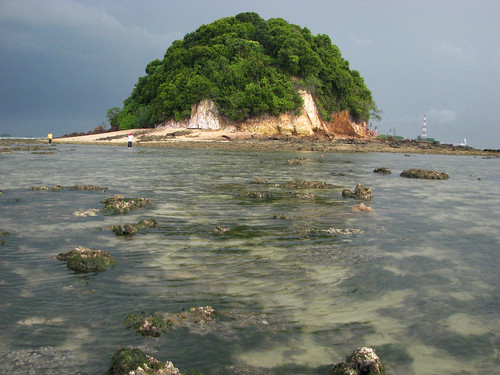
We often called Jong as the "bun" island due to its characteristic shape. It also had a rather extensive intertidal flat that stretches out in the southeastern direction. The sky was overcast when me, Robert and RY got to the island first.

A heavy downpour occured soon and Robert managed to find a natural tent which was actually a cave with overhanging trees while the rest of the gang stayed in the boat. Luckily the rain clouds were blown over to Pulau Bukom and Semakau, allowing us to carry on the exploration.
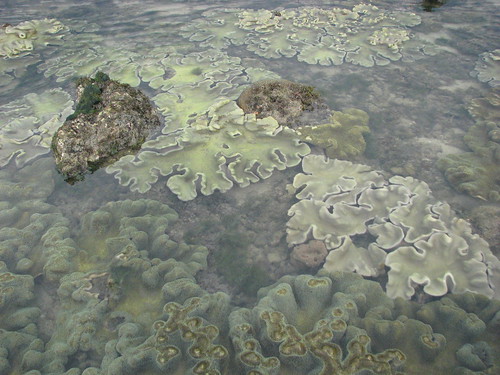
The intertidals on this small island is very unique compared to others because of their soft corals (thats the reason for my title btw). They were basically so many of them in huge sizes that they seemed like carpets on the seafloor!

RY managed to find what seemed to be like a spotted belly crab (Ozius guttatus).
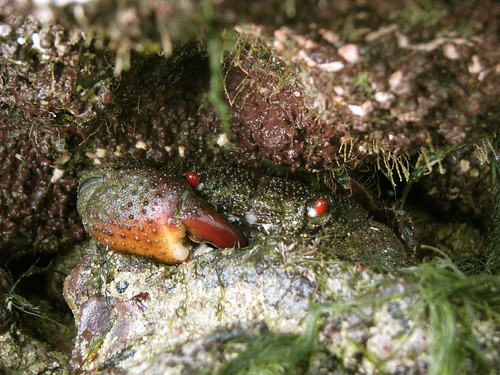
There were lots of red eye reef crabs (Eriphia ferox) that were hiding inside rock cervices.
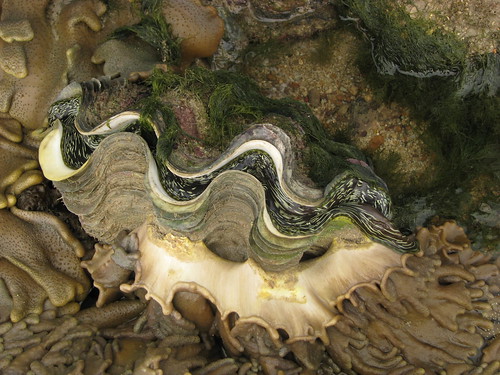
KS remembered that there was a resident giant clam (Tridacna maxima) here and he bought us there to have a glimpse. You can see that it was also completely surrounded by soft corals. Their colourful mantle actually contained symbiotic algae that can make food from the sun and transfer some to its host.
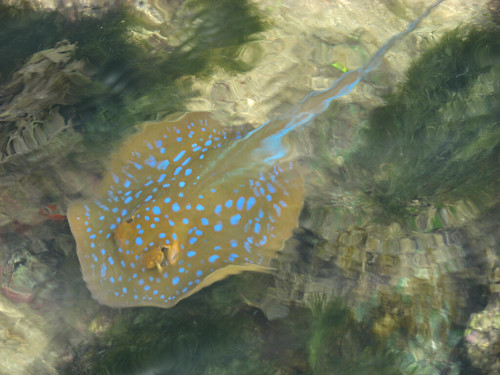
The tide is just at the right level, thus I saw a lot (at least 4) blue spotted fan-tailed ray (Taeniura lymma). Even though they are very shy creatures, be wary as they are armed with a venonmous barb at the tail.
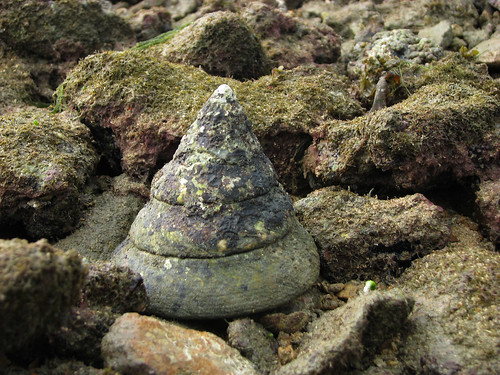
Typical in the rocky shore was this giant top shell which was about 20cm in height....
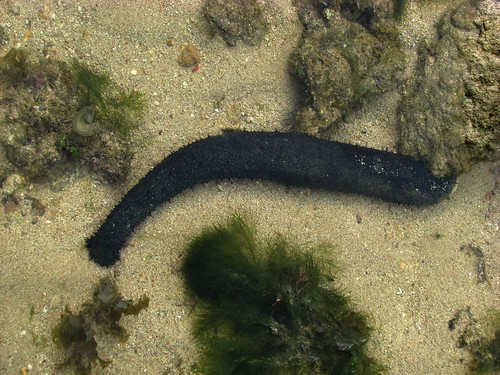
and the black sea cucumber (Holothuria leucospilota). This timid cucumber often peep out from under the rocks and extend out their feeding tentacles to suck out any detritus on the sand. When disturbed, they can spill out lengths of sticky white paste to entangle their predators.
Last but not least are the slugs~ Apparently, the Bryopsis algae is in season now and we managed to see many sap-suckers of these seaweeds another than the leaf slug which we saw at cyrene reef.

First up is this slug Dermatobranchus sp. It was really a challenge photographing them and me, RY and KS almost broke our backs bending over to take a nice shot of it on the waving algae.

I finally gave up after the first picture and just causally took pictures of the two remainding slugs. This is Thuridilla gracilis.

And the hairy one was the smallest of all, about 5mm! Not sure about the ID though.

KS found these three nudibranchs (Chromodoris marginata). Nudibranch is actually a combination of Latin and Greek words called naked gills. This is because their gills are located externally, which is the fluffy cauliflower structure at its back.
A nice day at Jong with several satistifying photographs. I will blog about today's Semakau public walk soon. We actually saw dolphins!

1 comment:
Nice blog! Enjoyed the photos and good work on highlighting the Serangoon Mangroves
Post a Comment